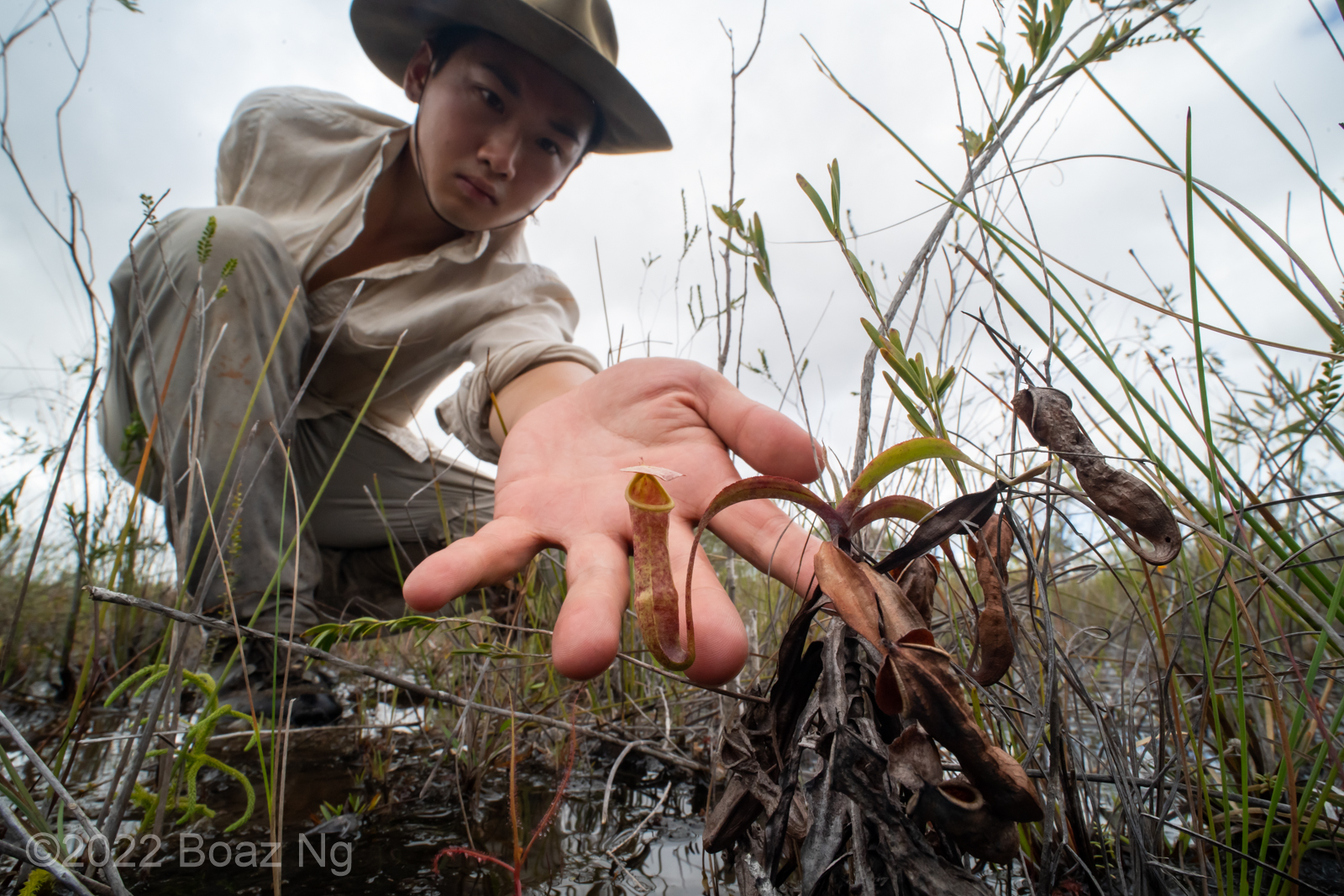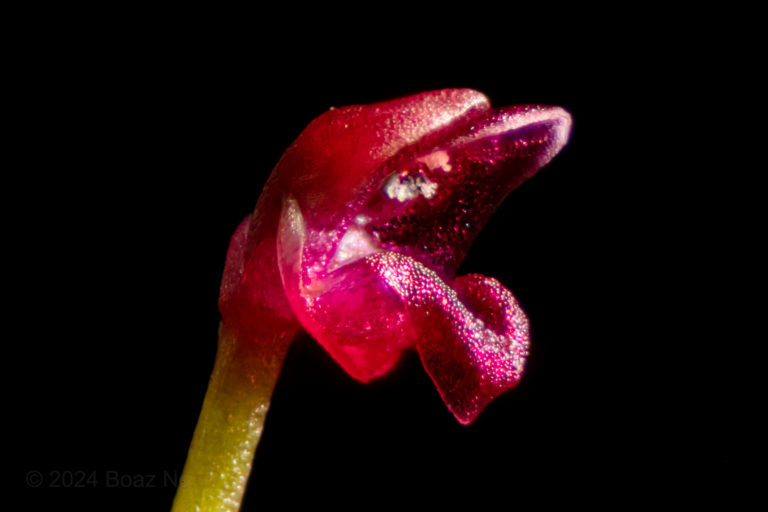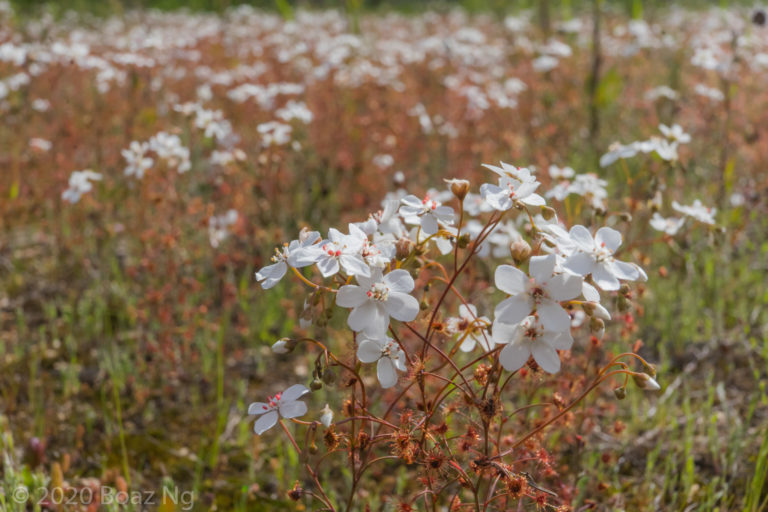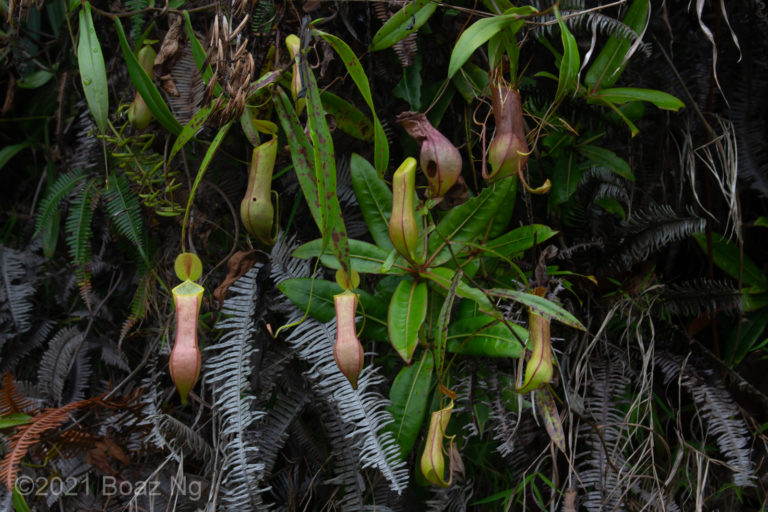Nepenthes parvula is a diminutive pitcher plant endemic to swamps in Cape York, NE Australia. It’s taxonomic status is the subject of much debate, with some regarding it as a mini-form of N. tenax. In examining whether it is a distinct taxon, is absolutely critical to study these plants in the field to observe their relationship to each other and the environment.
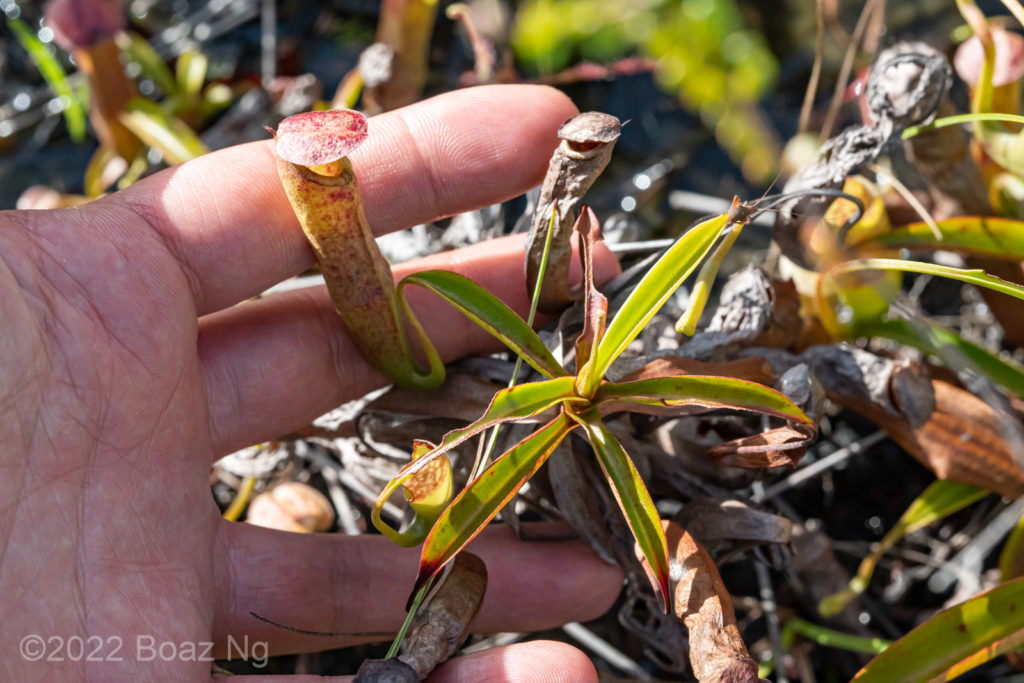
N. parvula is best identified by its sparse number of active, tightly clustered leaves at the end of a stem of old growth, giving the appearance of a raised rosette. Intermediate pitchers about 4-5 cm tall are predominantly formed. Pitchers are reddish throughout and bulge slightly towards the base. The tendrils of the intermediate pitchers are non-coiling, non-twining, hang low and turn inwards such that the pitcher faces obliquely towards the centre. True upper pitchers are only occasionally formed, usually occurring immediately before the inflorescence.
These characters are specifically contrasted with the invariably coiling tendril of Nepenthes tenax, which usually only grow upper pitchers that are larger, greenish, tapering and highly elevated by the tendril.
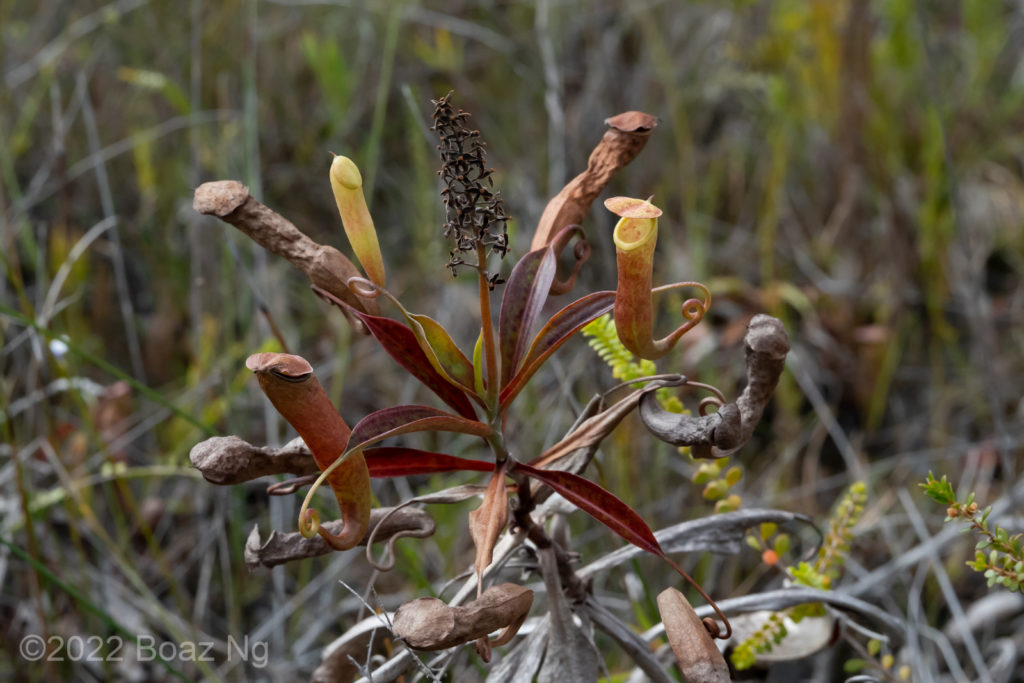
In the environment, Nepenthes parvula is usually found slightly lower in the floodplain than N. tenax in loosely consolidated peaty soil saturated with water up to about shin depth. At the sites I visited, reddish dwarf plants dominate this wetter niche.
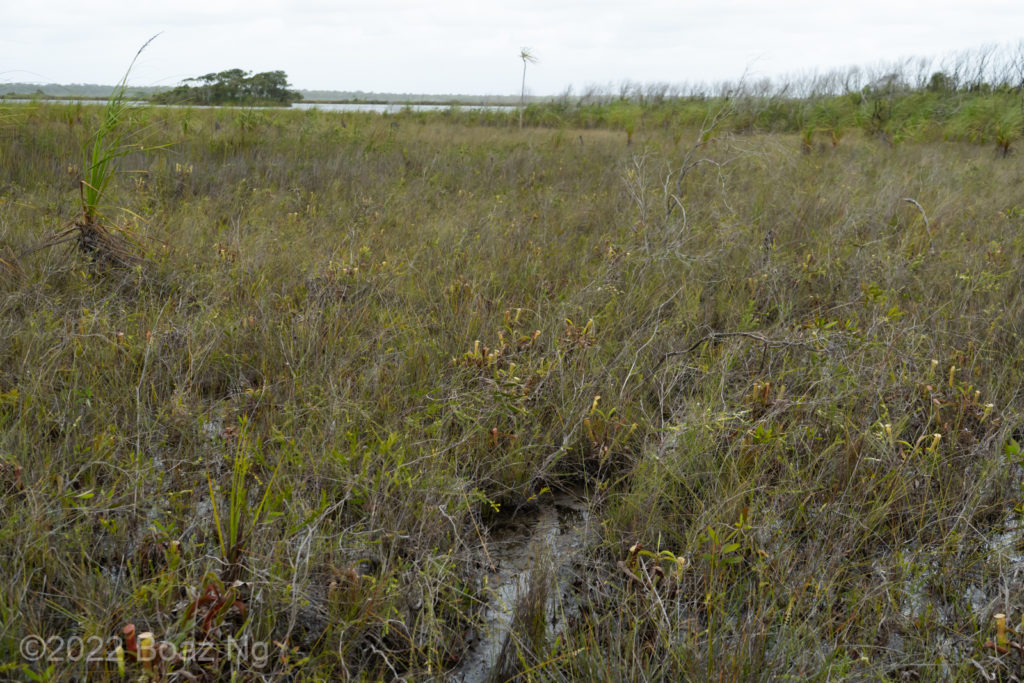
A full spectrum of intermediate plants fully bridge the phenotypes between N. parvula and N. tenax. Many dwarf specimens also displayed features suggestive of introgression from N. mirabilis. These intermediates grow intermixed within populations of both taxa, and suggests that the taxa are still early on in their process of evolutionary divergence.
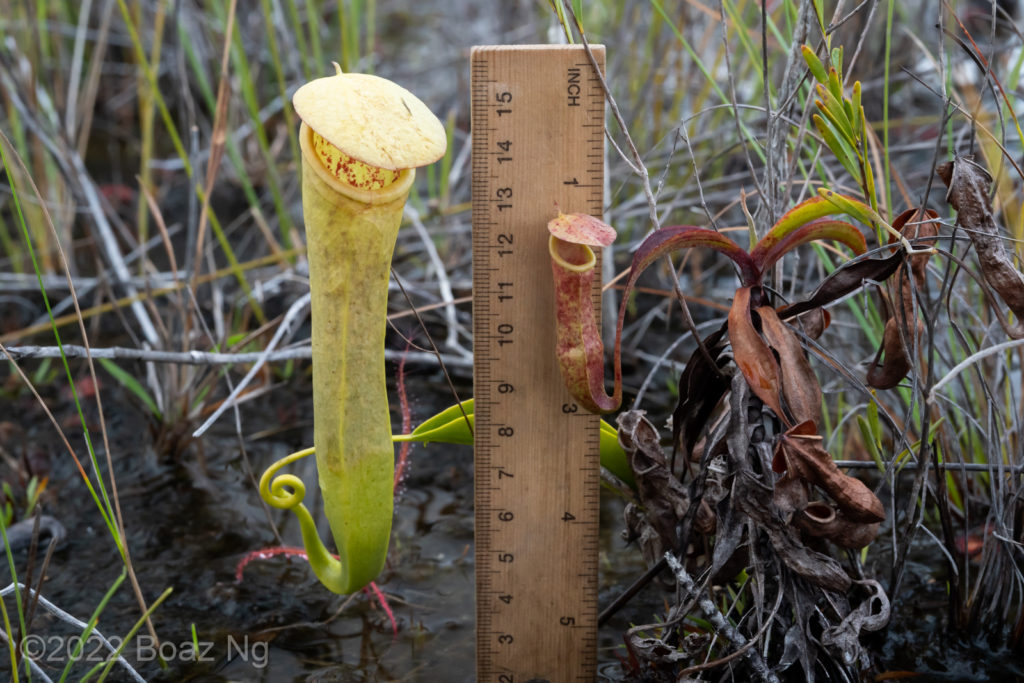
In examining the taxonomic status of N. parvula, it is perhaps helpful to place it in context with the other three Australian taxa. N. tenax and N. rowaniae are divergent from their ancestor, N. mirabilis, in morphology and niche preference. Notwithstanding, hybrids are very abundant between N. mirabilis and N. tenax/rowaniae, fully bridging their phenotypes and occurring in the transitional zones in the habitat as well as intermixed with ‘pure’ plants. This situation is similar to that of N. parvula and N. tenax.
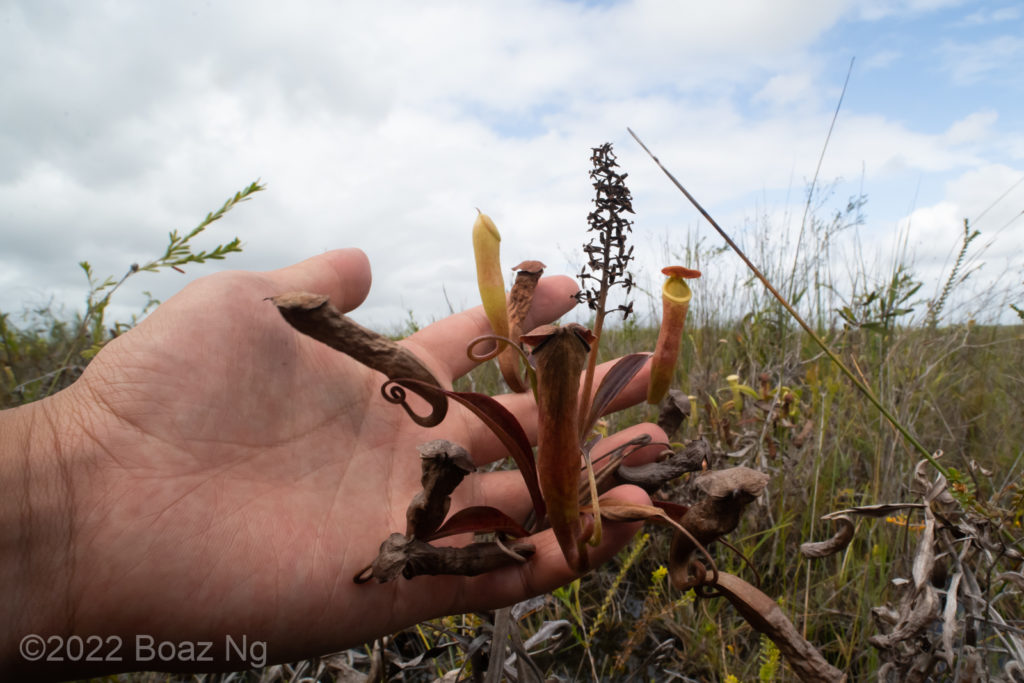
So is Nepenthes parvula a species? Well it depends… The concept of the biological species is fluid and where you ‘draw the line’ for various taxonomic ranks depends on your philosophical understanding of the evolutionary sciences.
Altogether it is my view that if your personal species concept leads you to accept N. tenax and N. rowaniae as distinct species, N. parvula should also be regarded as such given what I consider to be a similar level of divergence between the taxa.
Perhaps a better question to ask would be ‘what is a species?’

